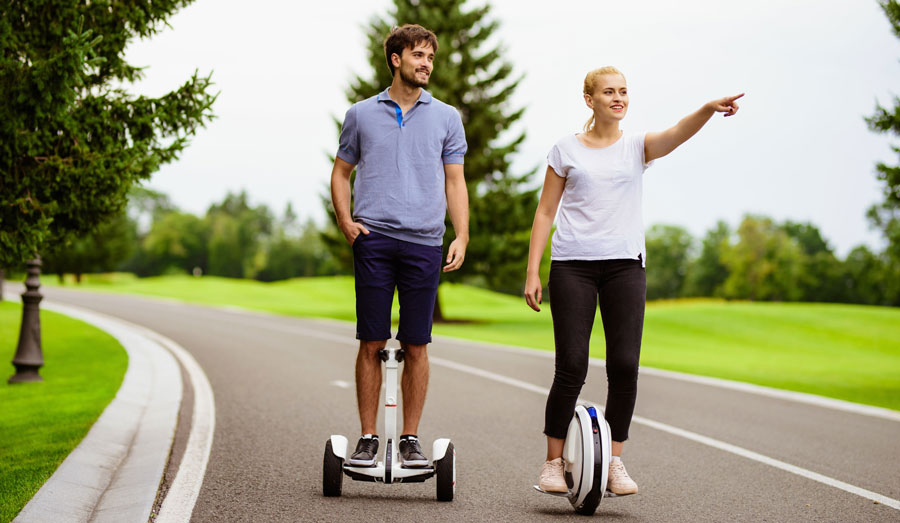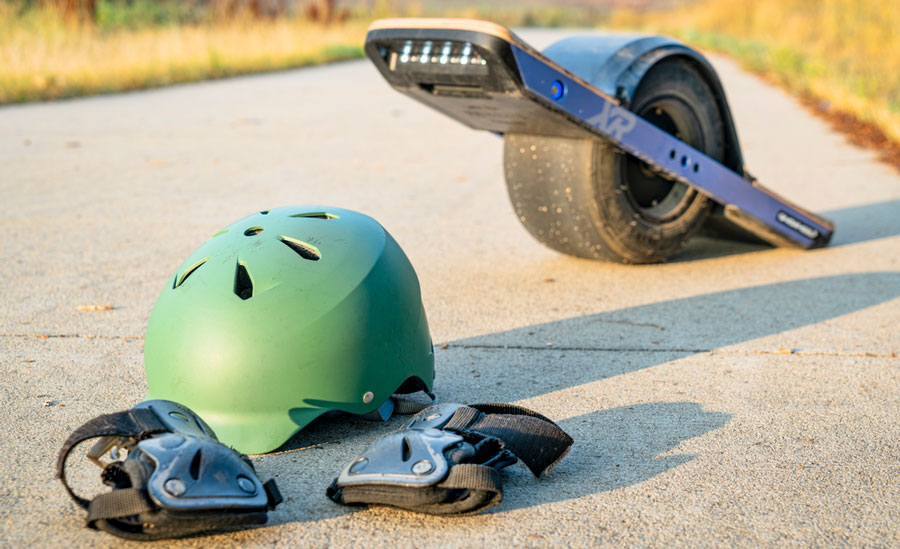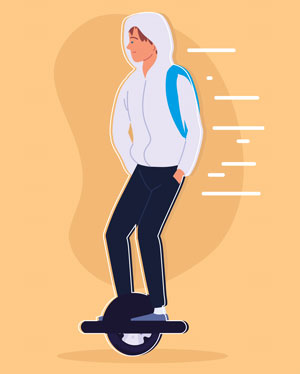The Onewheel was invented and released by Future Motion Inc. and is a self-balancing single wheel electric skateboard styled contraption. The Onewheel was funded by a Kickstarter campaign in 2014 and the original Onewheel was released in 2015 and had a range of 4–6 miles and a top speed of 13 mph (20 km/h).
Additional models have also been released with the Onewheel GT boasting an extended range between 20-32 miles and a top speed of 20 mph. With such high speeds and a steep learning curve for riding (the dreaded dismount is a major stumbling point for many riders), there have been many accidents reported online.
Onewheel boards can be safe to ride with the right experience level from the rider and terrain. However, they also pose plenty of risks. Some Onewheel riders have reported faulty boards or software, although this is rare and accounts for around 1% of all boards sold.
Difference between riding the one wheel and a regular board

Regular skateboard users may notice some similarities in the way they control or turn a Onewheel board. However, Onewheel boards are quite unique and require some getting used to, even for more experienced board riders and may not be safe in the beginning.
The boards use built-in direct-drive hub motors and sensors to provide balance to the board based on the rider’s position. The feet positioning is somewhat similar to riding a skateboard or longboard, and Onewheel boards use a heel sensor to activate and deactivate the motor.
The rider can lean forward to speed up and back to slow down similar to the technique of using a segway or hoverboard. A Onewheel board turns using the rider momentum when leaning into a corner, similar to other board sports.
What can go wrong riding a Onewheel?
Like any board sport, there’s plenty that can go wrong when riding a Onewheel. Although Future Motion Inc. is surging ahead releasing new models every few years, they have also hit plenty of speed bumps along the way, with many safety concerns reported from users.
From boards speeding up involuntarily to boards going limp mid-cruise, there’s been a flurry of concerns and accidents reported. The dismount crops up on many forums as being particularly tricky to master, with many riders reporting falling off or crashing while attempting to dismount while either stationary or bailing out at speed.
Onewheel has provided detailed information and rider tips for dismounting their boards, and have even provided several instructional YouTube videos for novice riders to learn how to use the board safely.
User error or inexperienced riders falling off and having accidents are a majority of the claims online. Future Motion Inc. has gone to considerable lengths to educate customers and provide aftercare, including opening a Onewheel FAQ, a Onewheel fanpage, and a Onewheel.wiki page which lists tips for beginners.
What should you not do on a one-wheel?
While the Onewheel is a great personal transport board for the urban environment (and even off-road), there is a limit to what you can and cannot do while riding a Onewheel board.
- Don’t try to learn using your Onewheel on busy urban roads or pavements. To start, learn on flat and even terrain with no obstacles.
- Don’t ride your Onewheel at night until you feel confident with your skill level.
- Don’t start off using your Onewheel in the more advanced modes as they offer far higher top speeds and far less balance control.
- Don’t try to reach the top speed of your Onewheel until you’ve mastered balancing, dismounts, and cruising at lower speeds.
- Don’t let the battery power of your Onewheel get too low. The boards are prone to nose-diving or lack control features when battery life is drained. It is recommended that boards are fully charged before each use and do not drain the battery below 20%.
Do you need a helmet and what other safety gear is a must?

The most common (and likely) occurrence when learning to use the Onewheel is falling off. It sucks and can sometimes be painful, so to prevent injury, a rider should be adequately protected so they don’t fall and do serious damage. Safety gear is a must!
A safety helmet is number one on the list of safety gear and can make all the difference between falling and recovering with no injuries and bailing and needing to visit your local hospital Emergency Room. Always, always wear a helmet when riding a Onewheel, no matter what skill level you are.
The second most important set of safety gear is wrist guards or gloves. When falling off any board, it’s natural to put out our arms and hands to cushion the blow, so without proper wrist and hand protection, you’re gonna have a pretty rough time when your skin comes in contact with the pavement.
Motorcycle pants and jackets are well equipped to prevent nasty abrasions when you fall off at any speed.
Is it safe to ride a one-wheel outside?
Yes, Onewheel boards are designed to be used outdoors under certain conditions. Flat even pavements or roads are ideal for riding a Onewheel once you’ve gained enough experience and feel confident with your ability. While learning, it’s best to find quiet areas with even flat terrain, and grass is a great option as it cushions the blow when you fall off.
What’s the safest way to learn to ride the one-wheel?
The best way to safely learn to use your Onewheel is to take it slow at first, use safety equipment and learn on flat, even terrain (preferably a dry grass area).
Avoid learning in areas with obstacles or areas with pedestrian or car traffic.
All Onewheel models offer various riding modes. The boards are shipped set to ‘Classic mode’ which is a beginner mode offering lower top speed and a more pronounced ‘pushback’ feature. Stay on this mode for the safest option. Let’s take a look at all the modes.
Classic mode
- Top speed of 12 mph
- Intended max riding speed intended for 8-10 mph
- More pronounced pushback, preventing riders from leaning forward too quickly and unintended speed increases
- Sensors are tuned to provide more stability and balance to novice riders
Extreme mode
- Top speed of 15 mph
- Far less pushback resistance which activates after 12 mph
- The rider can surpass 15mph top speed while downhill and braking mode will engage automatically at 25 mph
Elevated mode
- Top speed of 15 mph
- Far less pushback resistance which is activated after reaching 12 mph
- Far less braking resistance, riders will need to lean back far more to engage braking
- Advanced rider skills required to balance their own weight when over the 15 mph top speed
Conclusion – is this board safe to ride?
 Onewheels are a great way to get around and explore the urban environment, but they can be dangerous for inexperienced riders due to their capability to reach high speeds. The newest GT model offers an exceptional range and offers speeds that are comparable to an e-bike. However, Onewheels take time and practice to master, and riders should always use protective equipment and practice in traffic-free areas on flat, even terrain.
Onewheels are a great way to get around and explore the urban environment, but they can be dangerous for inexperienced riders due to their capability to reach high speeds. The newest GT model offers an exceptional range and offers speeds that are comparable to an e-bike. However, Onewheels take time and practice to master, and riders should always use protective equipment and practice in traffic-free areas on flat, even terrain.